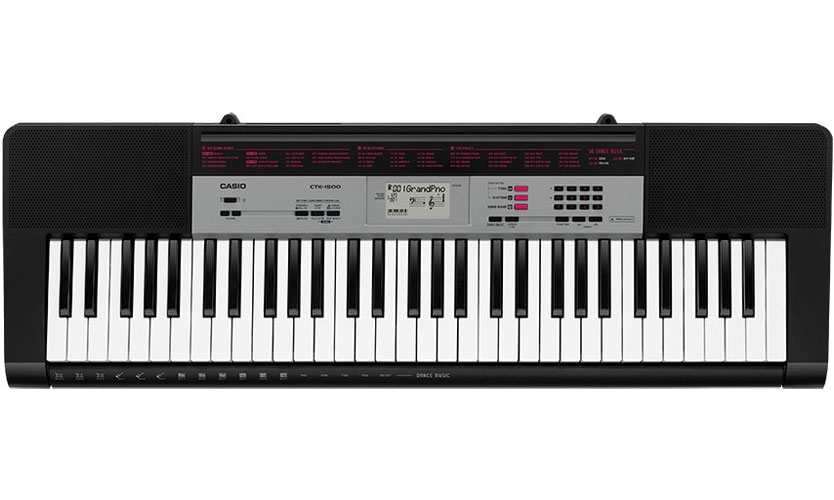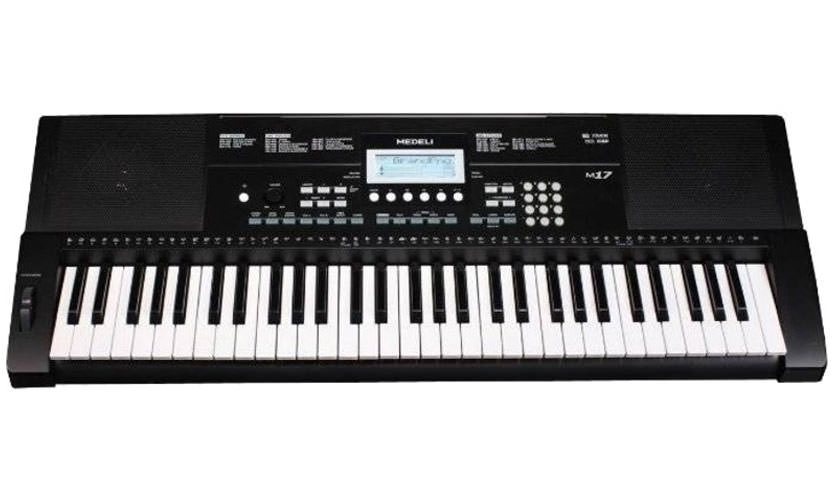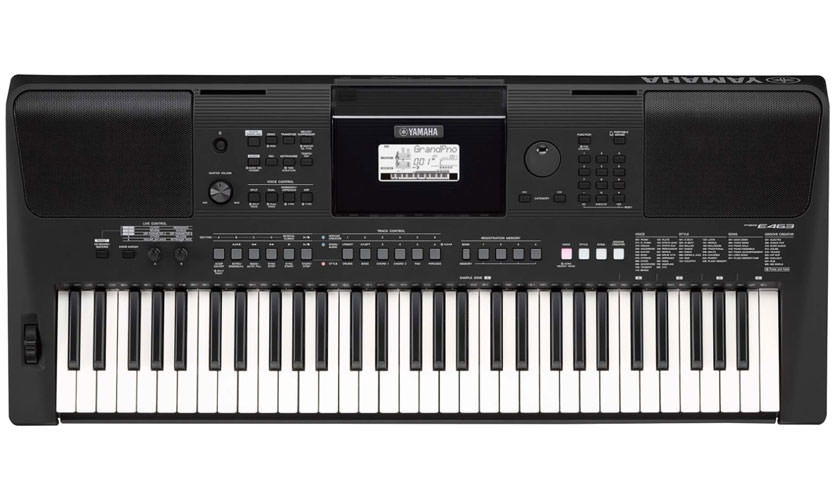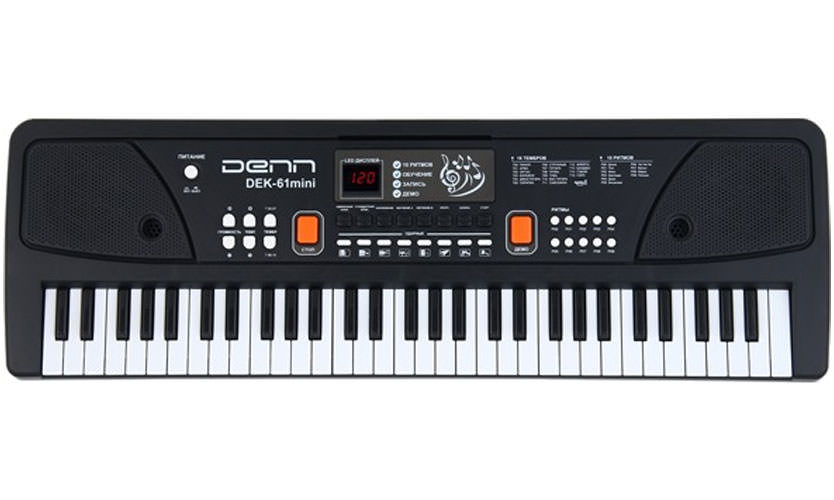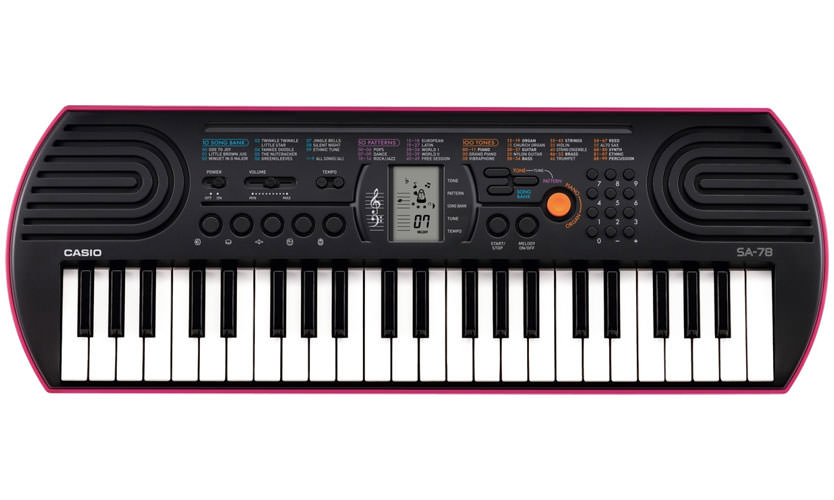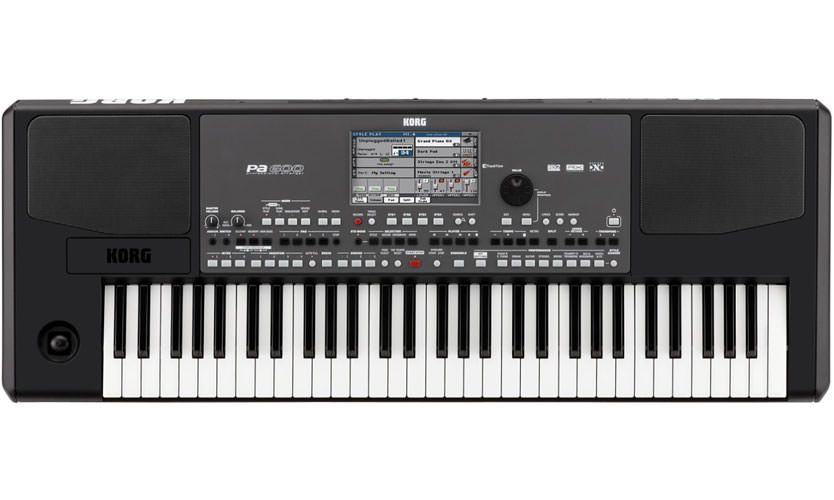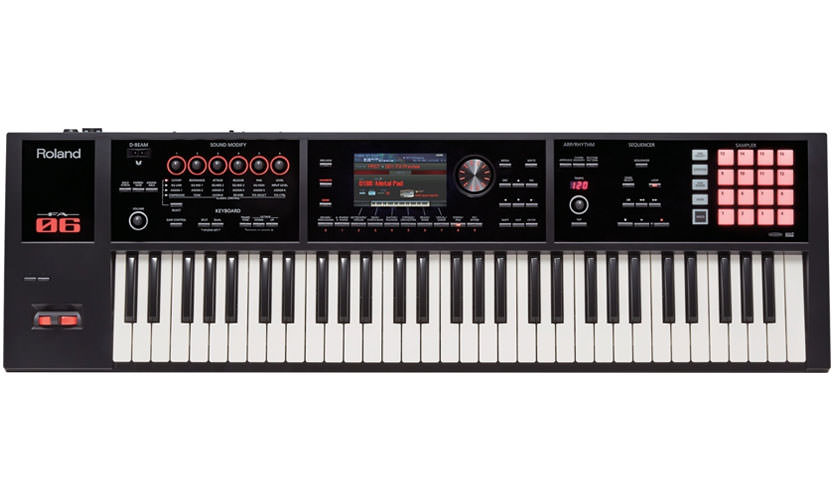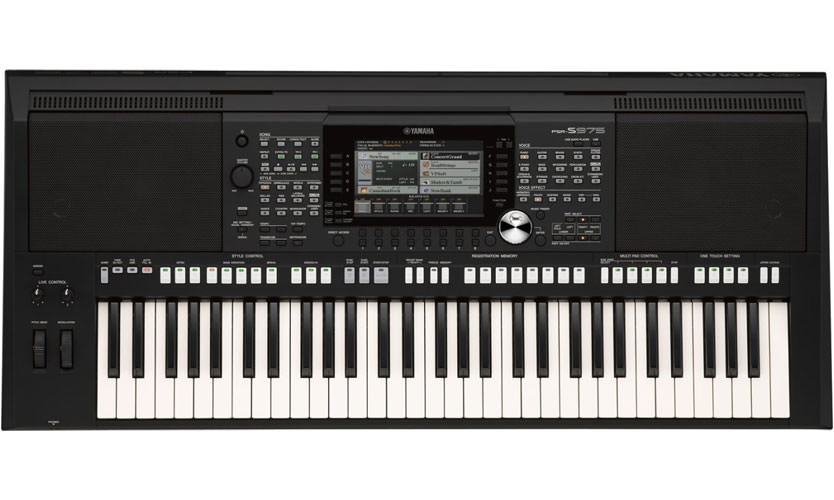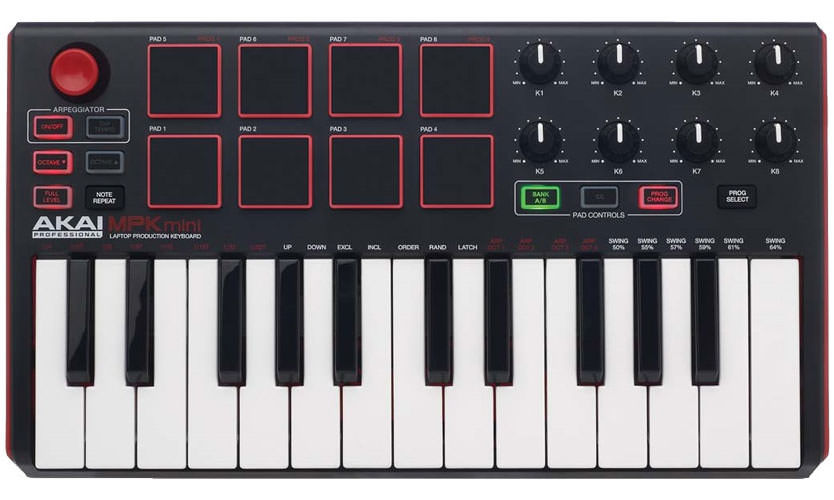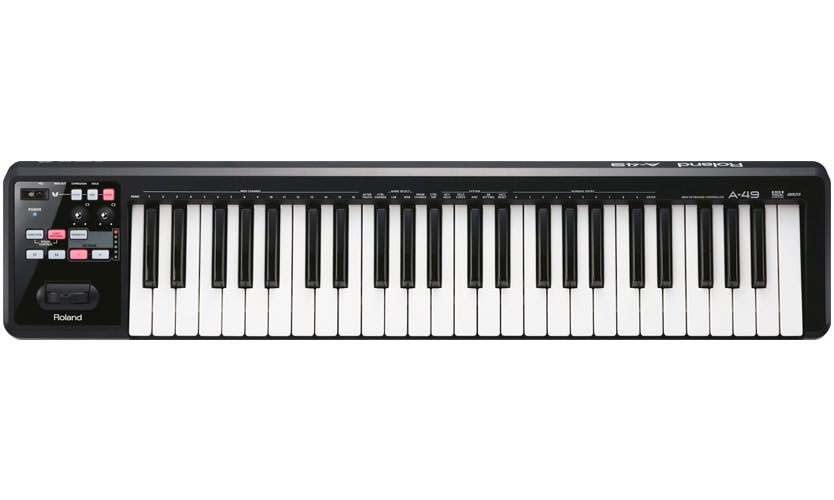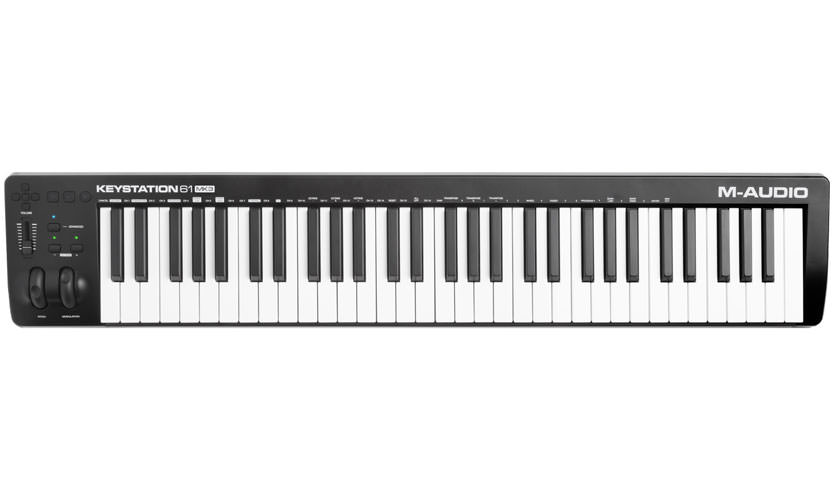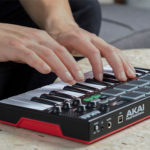In music stores today a large assortment of synthesizers is presented. Most of them look like two drops of water. It’s difficult to choose a beginner musician. This rating will help in resolving the issue. I spent a lot of time to choose the best and most relevant synthesizers for different categories of people - children, beginners and professionals. Composing the TOP-12 synthesizers, I relied on the opinions of experts and professional musicians.
Best synthesizers for beginners
Synthesizers for beginners are inexpensive devices with the obligatory presence of a training mode, often with modest functionality, although models that are more expensive can compete even with a professional tool.
CASIO CTK-1500
Opens the rating of an inexpensive synthesizer of a famous Japanese brand with everything necessary for training:
- keyboard of 61 full-size passive keys with the possibility of separation;
- polyphony - 32 voices;
- 120 built-in tones;
- 70 accompaniment styles;
- metronome;
- training mode;
- fine tuning;
- headphone output;
- display;
- built-in acoustics;
- Works from 6 AA batteries to 6 hours.
Such characteristics make it possible to qualitatively reproduce complex compositions for novice musicians. Instrument price - total .
Pros:
- price;
- dimensions;
- music stand included;
- dance music mode;
- work from a network and from batteries;
- the ability to fine-tune.
Minuses:
- not always comes with a power supply. Check with the seller;
- headphone output combined with linear;
- lack of digital effects;
- no input for sustain pedal.
A great gift for a budding teenage musician. Simple controls, a minimum of options unnecessary for a beginner + compactness, battery operation and headphone output are factors that allow you to train playing skills anywhere and anytime.
Medeli M17
A more advanced tool compared to the previous rating model is the CASIO CTK-1500. It can be used as a second “step” for beginners. Active keyboard, more built-in sounds - 390 with the ability to receive other sounds from compatible devices with a MIDI connector. Has 100 accompaniment styles. It allows you to play a melody and record it with subsequent editing, to mix tracks, for example, using computer technology - a USB B connector is provided. It has built-in sound effects - reverb, chorus, transpose, vibration. The built-in acoustics is much more powerful than the CASIO CTK-1500 - 20 W, it already sounds on a par with a professional instrument. Price - .
Pros:
- dimensions;
- there is an input for the sustain pedal;
- MIDI input, USB output;
- there is a headphone output;
- informative display;
- keyboard sensitivity;
- high sound quality;
- quality of built-in acoustics;
- a large number of tones, accompaniment styles, learning tunes;
- sound effects;
- the ability to record 1 full song with its editing (overlaying parts, changing the volume, timbre, key, adding sound effects, etc.).
Minuses:
- not in all cases comes with a power supply. Check with the seller for a complete set;
- no music stand included;
- works only from the network;
- small viewing angle of the display;
- volatile memory. The settings have to be set after each shutdown;
- instruction in English;
- the transpose and shutdown buttons do not always work the first time - you need to hold it for a few seconds.
This is a semi-professional model: you can train skills in playing and editing music tracks, even if within a limited framework. Suitable for people with initial skills in working with a synthesizer who want to develop their creative abilities further.
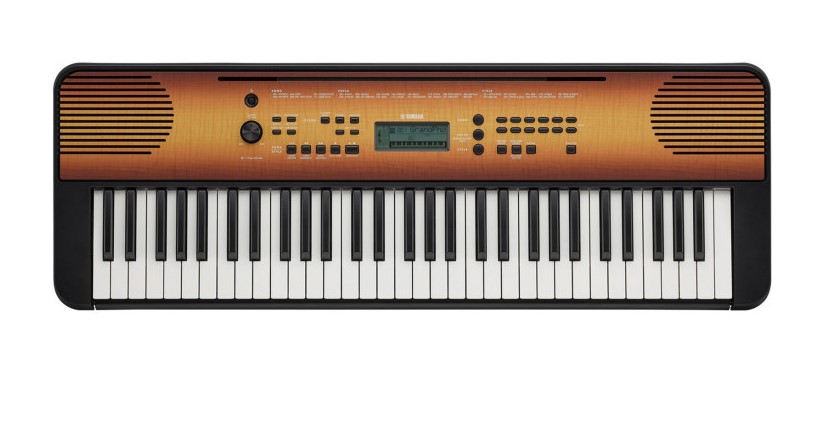
Yamaha PSR-E360
A 61-key digital synthesizer for aspiring musicians with nine step-by-step lessons (Yamaha Education Suite). Modes are available for execution with two hands and each separately. Keyboard sensitive to pressure - the stronger the keystroke, the louder the sound being extracted, and vice versa, the soft touch of the keys is accompanied by a quiet sound. 122 predefined songs will help you learn the game. The front panel of this model is finished in a wood effect and comes in two elegant colors: dark walnut and maple. There is a jack for a sustain pedal, a stereo headphone jack and an Aux input for connecting an external audio signal source. average price .
Pros:
- 400 high-quality voices, 130 auto accompaniment styles;
- 122 compositions, Song Book with notes (can be downloaded on the Internet);
- recording function;
- AUX IN input for connecting an external audio source;
- Master EQ / Ultra Wide Stereo features
- duet mode;
- compact and portable design;
- the ability to work on batteries (6 x AA);
- original design.
Minuses:
- some users complain about slippery keys and low volume.
YAMAHA PSR-E463
Compared to previous participants, the rating has an active semi-weighted keyboard. You can adjust the volume, set sound accents during the game. Polyphony - 48 voices, 758 built-in tones, the ability to adjust the tempo of the accompaniment. New sound effects - arpeggiator, pitch controller. The acoustics of the instrument are not very powerful (12 W), but consists of two speakers, providing decent stereo sound. Price -
Pros:
- materials and build quality;
- there is a headphone output, USB;
- sustain pedal input;
- work from batteries and from the network;
- backlit display;
- functional (many styles, timbres, sound effects, easy removal of live samples).
Minuses:
- no MIDI connector;
- curtailed learning mode capabilities - a tool not for those who plan to learn to play from scratch;
- the keyboard is harsh, the keys are pressed noisily;
- saves audio files in WAV format;
- weak acoustics;
- translation of instructions.
A model with advanced functionality that provides development opportunities. A persistent person living in music can learn to play it from scratch. Designed for beginners with the makings of talent, the prospect of a musical future. For use at home and for fun, I recommend the YAMAHA PSR-E463, and for younger beginners - the CASIO CTK-1500 or the tools below for children - the savings are justified.
The best synthesizers for kids
These differ from synthesizers for beginners in dimensions, size of keys, and noticeably truncated functionality. The principle of operation is preserved, therefore, it is impossible to clearly name a children's synthesizer as a toy: rather, it is an instrument adapted for children. Later, you can transfer the child from him to the synthesizer "for beginners" - he will not feel the difference, he will immediately begin to comprehend additional functions.
DENN DEK61mini
61 unweighted key with active mechanics trains hand motility, sense of sound.Polyphony - 4 voices, 24 timbres, 10 accompaniment styles - decent performance for a children's instrument. There is a training mode, recording option. For those who like to accompany music with singing, a microphone output is provided. Price - .
Pros:
- price;
- compactness, weight;
- power supply from mains and batteries;
- functionality;
- built-in acoustics for 6 W;
- training mode;
- the ability to record;
- microphone and headphone jacks.
Minuses:
- sound quality;
- tight keys;
- volume settings go astray when turned off;
- headphone output combined with linear.
Not a bad thing for entertaining and developing a child's imagination, hearing, fine motor skills, a sense of style in music. Suitable for children aged 3 to 10 years. Plus, you can add vocal lessons here, but you need to buy a microphone.
CASIO SA-78
The best model in the ranking of synthesizers for children. Equipped with 44 unweighted, passive keys. With less powerful acoustics (only 1.6 W), the DENN DEK61mini sounds better. The possibilities are expanded - 100 voices, 50 styles of accompaniment. Dealing with it is easier due to the built-in display that displays all active settings. Price - .
Pros:
- design;
- compactness, weight;
- materials and build quality;
- functional;
- display;
- good sound;
- headphone jack;
- power supply from mains and batteries;
- training mode.
Minuses:
- no power adapter included;
- recording is impossible;
- no microphone jack.
A good tool for introducing a child to music lessons: many timbres and styles of accompaniment will help him learn musical basics. It costs so much money, if we compare it with DENN DEK61mini, or not, I can’t say for sure. Sure, it sounds better, offers more choice of accompaniment, but do all kids need it? If your finances are really tight, then the DENN DEK61mini capabilities are enough to start. Later, on the issue of the need to purchase an “advanced” level tool, one can focus on the needs of the child.
The best synthesizers for professionals
All tools in this category are intended for professionals and have many additional functions. There are also differences - functional, price. Which is better to choose?
KORG Pa600
The price of this synthesizer is , but in terms of functionality and quality it is comparable to the YAMAHA PSR-S975, which is rated 2 times higher. Has a huge potential for creating musical compositions - 950 built-in timbres + the ability to add 384 user ones. 360 styles of accompaniment + 1200 user can add. Lots of sound effects. The ability to connect a pedal. Advanced PC capabilities, software, and recommendations on disk are included. Two USB A inputs, USB B output.
Pros:
- price;
- complete set (music stand, disc with useful information and software - included);
- convenient touch screen;
- powerful built-in acoustics;
- good sound;
- functional;
- the ability to add custom styles and timbres;
- 2 connectors for a microphone;
- USB input / output;
- There is an input for the sustain pedal.
Minuses:
- no mixer;
- does not support sampling.
An ideal synthesizer in terms of price-quality ratio. Suitable equally for amateur and professional use.
Roland FA-06
Easy in comparison with competitors, but very functional device. It weighs only 5.7 kg, has a built-in mixer, supports adding samples, and has the necessary connectors for this. Supports SD memory cards to which you can save recorded songs. It has a variety of sound effects, including octave shift, arpeggiator, pitch and modulation controls, vocoder - combining voice sound with instrument sound. Differs in the principle of work. It has weighted active keys (you can make sound accents in music). Two line outputs are provided for sound transmission at once - the possibilities for connecting acoustics, including through an amplifier, are unlimited. Price - .
Pros:
- compactness, light weight;
- touch display, clear, convenient control;
- control from a smartphone;
- a large selection of accompaniment, timbres, sound effects + the ability to add your own;
- convenient sequencer;
- there is a mixer;
- fast sampling;
- MIDI input;
- USB output;
- 2 line outputs;
- it is possible to connect a sustain pedal.
Minuses:
- traces remain on the glossy surface;
- key travel is harsh.
The best model for touring, recommended for those who often move from place to place: lightweight (half the weight of competitors), modest in size, but not inferior even to the YAMAHA PSR-S975 in functionality.
YAMAHA PSR-S975
Experts call this model the best professional synthesizer. All new developments are put into the tool. 128-note polyphony, more than one and a half thousand tones, five hundred accompaniment styles, you can load your own from a USB flash drive, computer, or by recording the instrument. The model is equipped with a mixer, equalizer, noise reduction system, compressor, vocoder, makes it possible to use all known sound effects. The presence of all the necessary connectors allows the synthesizer to actively interact with a computer, microphone, and guitar. In the absence of external acoustics, this is an instrument with decent built-in sound quality. 2 x 15 W speakers provide good clear sound with a large headroom. Price - .
Pros:
- functional;
- convenient management;
- 7-inch touchscreen display;
- large database of tones and styles with the ability to add custom ones;
- sound processing options;
- built-in acoustics with high sound quality.
Minus:
- high price.
Really the best synthesizer. Confused by the price - almost ... Perhaps it’s available to established artists and is worth the purchase, but for fans I would recommend Roland FA-06 or KORG Pa600 - both models deserve attention.
Best MIDI Keyboards
The MIDI keyboard is an indispensable tool in recording studios where you can process musical parts using computer software, expanding the capabilities several times. Requires a powerful computer and a sound card with a 24-bit DAC. Less popular than synthesizers. Let's consider 3 popular models.
AKAI MPK Mini MKII
The leader in the rating of MIDI keyboards on the E-catalog website with modest dimensions (318 × 45 × 181 mm) and weight (750 g). In theory, it can be carried in a bag, in practice it turns out to be useless: without a computer with a good sound card, the performance of the instrument is close to zero. The result of the desire to create a small-sized instrument was a keyboard with only 24 small-sized keys, convenient for children and people with small hands. The manufacturer tried to save the situation with 8 pads and 8 encoders. There are pitch and modulation controls, octave shift, arpeggiator, the ability to control playback functions (pause, stop rewind, etc.). Price - .
Pros:
- dimensions, weight;
- ease of use;
- programming the functions of buttons and encoders;
- functional;
- free software.
Minuses:
- hard, small keys;
- there are 24 - 24 notes and 2 octaves in total (the problem was partially solved due to the octave transfer).
Suitable for beginners mastering mixing tracks programmatically.
Roland A-49
Appreciated by professionals for the comfortable mechanics of the keys, and their performance deserves attention: full-size, rounded on the sides. They have 49 instruments (active, weighted). The MIDI-out connector is a nice bonus if the musician plans to connect to equipment with a MIDI-In input. Of the functionality that distinguishes this model from AKAI MPK Mini MKII, I would like to note transposition, an optical control system that imitates a pedal. Price - .
Pros:
- design;
- the quality of the keys, their mechanics;
- simple operation;
- combined joystick;
- infrared control sensor;
- powered by USB.
Minuses:
- drivers often need to be installed manually;
- problems with finding software fall on the user's shoulders.
Better in build quality than AKAI MPK Mini MKII, more convenient when you need to combine the functionality of the synthesizer and MIDI keyboard due to 49 full-size keys. Unlike a competitor, it has difficulties connecting to a PC; the software is not supplied, except for drivers that need to be installed manually. For a professional who has been making sound recordings for years, this is not a problem, but for a novice user it is better to take the AKAI MPK Mini MKII or the M-Audio Keystation 61 MK3.
M-Audio Keystation 61 MK3
New from the American manufacturer. It has 61 active semi-weighted keys, buttons that can be used to control playback functions and a fader that is responsible for adjusting the volume. There are controls for pitch, modulation, octave shift. Like the Roland A-49, it has a MIDI-out connector. Price - .
Pros:
- Beautiful design;
- good materials, build quality;
- full-size keys with good mechanics;
- convenient management;
- Software as a gift.
Minus:
- the STOP, PLAY, REC, navigation joystick buttons are recognized by the computer as a second MIDI device. Need configuration with the assignment of functions using software. Otherwise, they don't work.
Ideal midi keyboard in terms of price-quality ratio. A nice bonus to buy is the Ableton Lite program and several VLS plugins that are enough to get started.

